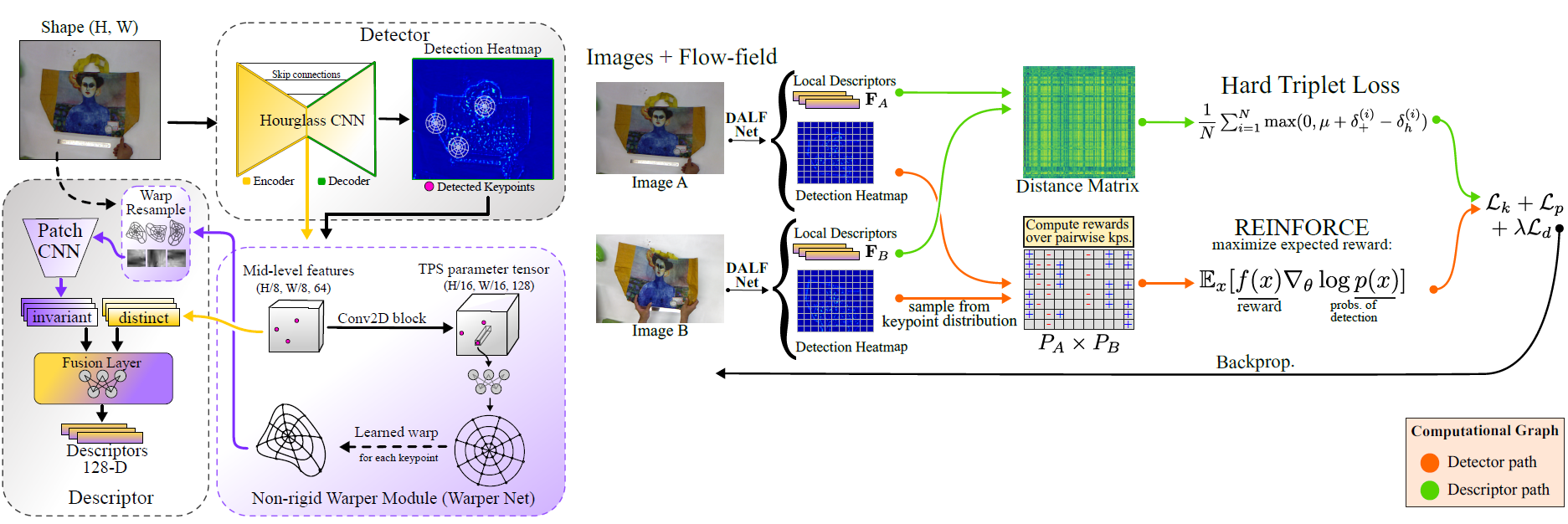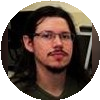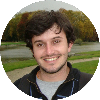Deformation-Aware Local Features (DALF)
2023 Computer Vision and Pattern Recognition (CVPR’2023)
Abstract
Local feature extraction is a standard approach in computer vision for tackling important tasks such as image matching and retrieval. The core assumption of most methods is that images undergo affine transformations, disregarding more complicated effects such as non-rigid deformations. Furthermore, incipient works tailored for non-rigid correspondence still rely on keypoint detectors designed for rigid transformations, hindering performance due to the limitations of the detector. We propose DALF (Deformation-Aware Local Features), a novel deformation-aware network for jointly detecting and describing keypoints, to handle the challenging problem of matching deformable surfaces. All network components work cooperatively through a feature fusion approach that enforces the descriptors’ distinctiveness and invariance. Experiments using real deforming objects showcase the superiority of our method, where it delivers 8% improvement in matching scores compared to the previous best results. Our approach also enhances the performance of two real-world applications: deformable object retrieval and non-rigid 3D surface registration. Code for training, inference, and applications are publicly available below.
Overview of DALF achitecture
Our architecture jointly optimizes non-rigid keypoint detection and description, and explicitly models local deformations for descriptor extraction during training. An hourglass CNN computes a dense heat map providing specialized keypoints that are used by the Warper Net to extract deformation-aware matches. A feature fusion layer balances the trade-off between invariance and distinctiveness in the final descriptors. DALF network is used to produce a detection heatmap and a set of local features for each image. In the detector path, the heatmaps are optimized via the REINFORCE algorithm considering keypoint repeatability under deformations. In the descriptor path, feature space is learned via the hard triplet loss. A siamese setup using image pairs is employed to optimize the network.

LinksConference Paper (Coming soon!) |
Team

Guilherme Augusto Potje
PhD Candidate
Felipe Cadar Chamone
PhD Student
André Araujo
Researcher
Renato José Martins
Professor at Université de Bourgogne
